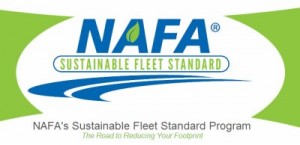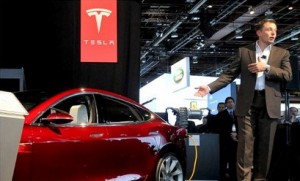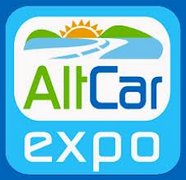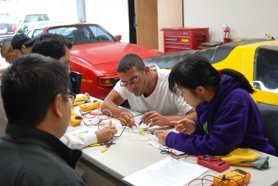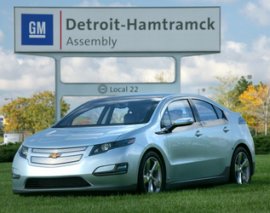 General Motors would like to pick up steam on sales of its plug-in hybrid Chevrolet Volt. To get there, GM will be selling two versions of the redesigned 2016 Volt. One will be a lower-priced version with a smaller battery pack and shorter driving range. That will be carried overseas through GM’s Opel division in Europe. The next versions of the Volt will go into production in about 16 months at the automaker’s Detroit-Hamtramck plant. That plant will get a $384 million investment that will be aimed toward the Volt and a new flagship Cadillac sedan and a redesigned Buick LaCrosse.
General Motors would like to pick up steam on sales of its plug-in hybrid Chevrolet Volt. To get there, GM will be selling two versions of the redesigned 2016 Volt. One will be a lower-priced version with a smaller battery pack and shorter driving range. That will be carried overseas through GM’s Opel division in Europe. The next versions of the Volt will go into production in about 16 months at the automaker’s Detroit-Hamtramck plant. That plant will get a $384 million investment that will be aimed toward the Volt and a new flagship Cadillac sedan and a redesigned Buick LaCrosse.
GM would like to reduce product cost and make the Volt more profitable, and expects to achieve necessary cost reductions in the 2016 model. The automaker would also like to see stronger sales results without investing so much on incentives. The Chevrolet brand reported selling just 58,158 units since the Volt was launched nearly 40 months ago.
And in other clean transportation news……
- More bad news on the EV startup front: Smith Electric Vehicles, based on Kansas City, Mo., has temporarily stopped plant operations. The company is best known for its Smith electric delivery truck, and says that it’s not shutting down operations for good. CEO Bryan Hansel says manufacturing the vehicles has yet to become profitable; he says suppliers and investors have been informed that it’s a temporary shut down and is part of the company’s plan to scale up production and sell enough of them to turn a profit.
- Tesla Motors is setting up a new finance arm to entice companies to lease the Model S as one of their fleet vehicles. Small and medium-sized businesses will be able to calculate the leasing cost on Tesla’s website will offer them an attractive value proposition. The new Tesla Finance unit offers leases through partner banks with a guaranteed resale value. Tesla is also getting ready to start selling cars in China this month. Tesla CEO Elon Musk will be delivering a few of the first ones to customers. He’ll also be meeting with representatives from China Petroleum & Chemical (also known as Sinopec) this month about constructing charging units in the refiner’s nationwide network of service stations. The charging network is expected to start in Beijing and then roll out to surrounding areas.
- CleanFUEL USA has rolled out the propane autogas industry’s first complete fuel network management system for electronic dispensers. Using CleanFUEL eCONNECT, fleet managers can economically monitor and control fuel inventories faster and easier than ever before with real-time data insight, flexible report storage, and remote access capabilities.
- The Environmental Protection Agency may continue to be sympathetic to the biofuels industry; EPA Administrator Gina McCarthy recently spoke to the issue at North American Agricultural Journalists meeting in Washington DC. McCarthy expects the EPA’s final rule to be different than the proposed version released in late 2013. After reviewing more than 200,000 on the Renewable Fuel Standard proposal, EPA is looking more closely at the realities of the fuel market, with one of them being the realities of the fuel blend wall. The agency expense more legal challenges for any RFS standards. “We need to be able to justify it in court, McCarthy said.
- Tesla Motors has taken a swing at “lemon law king” attorney Vince Megna’s lawsuit against the electric vehicle maker. While insisting that it doesn’t believe in automotive “lemon laws,” the company says there are several good reasons to be skeptical about the lawsuit and denied some of the claims. Megna made a big splash on the internet with a Youtube video on behalf of client Dr. Robert Montgomery of Franklin, Wis.; Montgomery stated in the filing that he had a number of problems (such as a malfunctioning door handles) with his Tesla Model S that led to it being pulled of the road for 66 days. He wants Tesla to buy it back under a law that take affect after the vehicle is pulled off the road at least 30 days during its first year of life.

